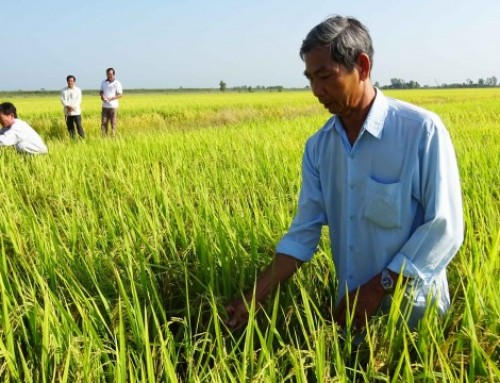ASEAN Guidelines on Soil and Nutrient Management A journey towards sustainable management of soils and plant nutrition begins

After two years of development, the ASEAN Guidelines on Soil and Nutrient Management (SNM) come close to the finishing line. These truly regional guidelines for policy makers of ASEAN Member States are the fruitful results of concerted efforts and collaborations among the Regional Expert Group on Soil and Nutrient Management from the 10 ASEAN Member States.
 The development of the Guidelines is facilitated by ASEAN Sustainable Agrifood Systems (ASEAN SAS).
The development of the Guidelines is facilitated by ASEAN Sustainable Agrifood Systems (ASEAN SAS).
About a third of the world’s soil is already degraded, according to the Food and Agriculture Organization (FAO) who reported these unsettling news at the World Soil Day that falls on 5 December of each year.
‘Only 60 years of farming left if soil degradation continues’, Reuters cited recently in one headline.
To put it graphically: We are losing 30 soccer fields of soil every minute. The causes of soil destruction include, among others, overuse of chemical inputs in today’s farming methods. The earth under our feet is too often ignored by policymakers, based on the report.
The development of the ASEAN Guidelines took two years and they are now in the final stage of revision. A completed draft was recently presented at the 8th Steering Committee Meeting of ASEAN SAS in Malaysia. Fourteen delegates from eight ASEAN Member States attended the Meeting on 7-8 December 2016. The Department of Agriculture of the Ministry of Agriculture and Agro-based Industry, Malaysia, GIZ and ASEAN Secretariat hosted the two-day event.

Dr. Thomas Jaekel
Chief Technical Advisor of ASEAN SAS, Dr. Thomas Jaekel said that the ASEAN Guidelines on Soil and Nutrition Management were a timely document for policy makers in ASEAN to help implement strategies and policies on soil and nutrient management at a national level.
“Currently, some of the damage to soil is already irreversible,” said Dr. Jaekel, “We have to recognise that we damage the soil, and we have to change things in view of better management.”
“Agriculture has to be productive and profitable. Otherwise, farmers could not sustain their business,” he said.
The Steering Committee supported the draft SNM Guidelines with comments provided and agreed to facilitate in country coordination for receiving approval of the Guidelines from respective ASEAN Member States.
The revised draft Guidelines will be circulated to the Steering Committee members by the end of February 2017 for the in-country consultations to provide feedback to the draft. Then, the revised draft will be submitted to the 9th Steering Committee Meeting of ASEAN SAS for consideration prior to submission to the 24th Meeting of the ASEAN Sectoral Working Group on Crops (ASWGC) in April 2017.
 The ASEAN Guidelines for Soil and Nutrition Management is a policy support document to national policy makers for guidance in developing national policies through the knowledge of ASEAN experiences and lesson learnt.
The ASEAN Guidelines for Soil and Nutrition Management is a policy support document to national policy makers for guidance in developing national policies through the knowledge of ASEAN experiences and lesson learnt.
The Guidelines have been developed during various consultation meetings of expert groups on soil and nutrient management, at both, regional and national levels. ASEAN SAS’s Project Coordination Unit in Bangkok together with Thailand’s Department of Agriculture as host country facilitated the development process of the Guidelines.
Its scope includes a description of soil types in ASEAN, good soil management practices, good nutrient management, standard, regulations and market information of fertiliser and supplements, and recommendations targeted specifically at policy makers on how to set framework conditions for implementation of soil and nutrient management in their countries.
By Rojana Manowalailao, ASEAN Sustainable Agrifood Systems





